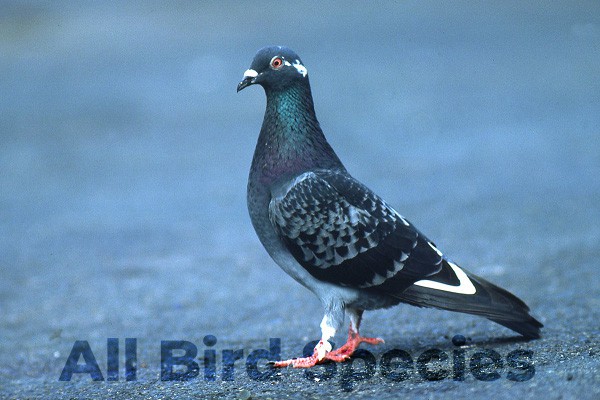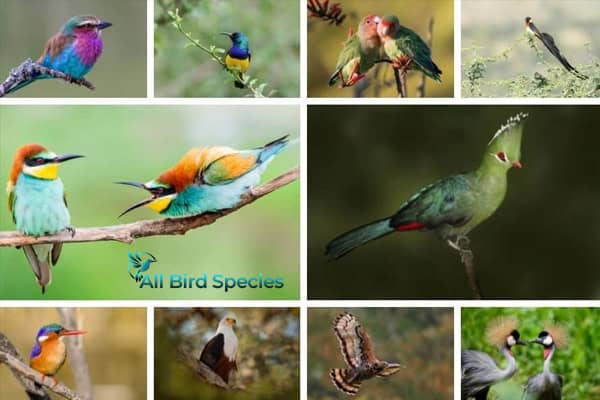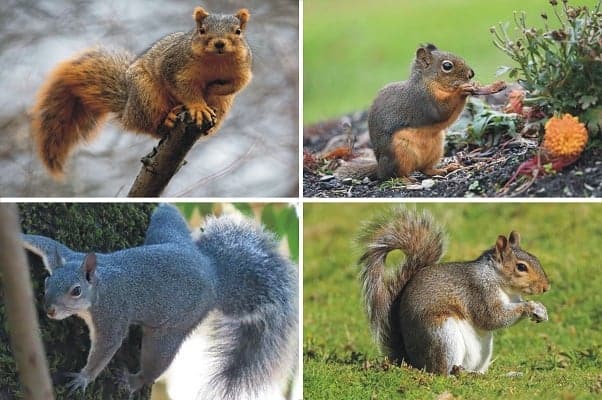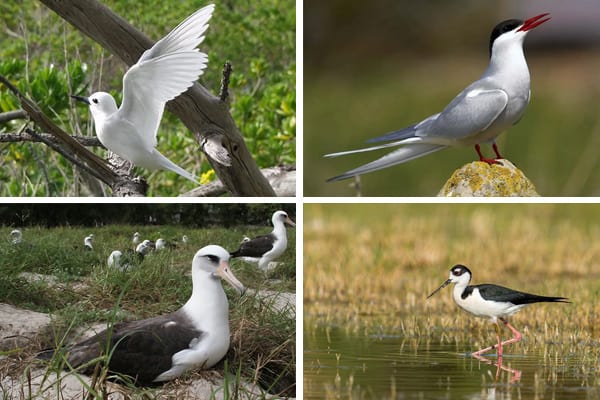3 Types Of Doves in Illinois (ID Guide With Pictures)
Did you know Illinois has three types of doves? You can find the Mourning Dove, Eurasian Collared-Dove, and Rock Pigeon here. Each is unique and interesting to watch. This guide is great for bird lovers or anyone wanting to learn about these birds.
The Mourning Dove is 9 to 13 inches long. It likes open places like fields and backyards. The Eurasian Collared-Dove is gray with a black collar and lives in many places. The Rock Pigeon is seen in cities and has a round body.
In this guide, you’ll learn how to spot these doves in Illinois. You’ll see pictures and get to know their habits and homes. Knowing about these doves makes birdwatching better and shows their value in our world.
1. Mourning Dove
- Scientific Name: Zenaida macroura
- Size: 23–33 cm (9–13 in)
- Weight: 100–170 g (3.5–6.0 oz)
- Lifespan: Up to 5 years in the wild (can live longer in captivity)
- Diet: Primarily seeds, grains, and some fruits.
The Mourning Dove, known as Zenaida macroura, is known for its grace and unique sounds. It has a slender body, usually 9 to 13 inches long. Its brown-gray feathers, black spots, and white tail edges make it easy to spot.

Appearance and Identification
Look for its long tail and 17 to 19-inch wingspan when spotting a Mourning Dove. These birds live in many places, from fields to cities. Their feathers can vary, making them harder to spot in different places.
Habitat and Geographic Range
Mourning Doves live in many places in Illinois. They like open areas but avoid marshes and dense forests. They can be found in southern Canada, the U.S., northern Mexico, and the Caribbean.
Behavior and Feeding Habits
Mourning Doves mainly eat seeds, like grains and wildflower seeds. They drink water by sucking it up from shallow places. Watching them in pairs shows their social side.
Must Visit: Doves in Kansas
2. Eurasian Collared-Dove
- Scientific Name: Streptopelia decaocto
- Size: 30–34 cm (11.8–13.4 in)
- Weight: 120–250 g (4.2–8.8 oz)
- Lifespan: Up to 16 years in the wild
- Diet: Primarily seeds, grains, and fruits
The Eurasian collared dove is a bird that has quickly become common in North America. As you learn about its Eurasian Collared-Dove features, you’ll see what makes it stand out. This helps in identifying the Eurasian collared dove among other birds.

Identification Marks
It’s easy to spot the Eurasian Collared-Dove because of its unique markings. It’s about 12-14 inches long and has a sandy gray color. This color helps it blend in with different places.
The most obvious feature is the black crescent collar on its neck. These doves have plump bodies and small heads. They also have long tails and broad, slightly rounded wings. The tips of their wings look darker when they fly, making them even more beautiful.
Habitat Preferences
The Eurasian Collared-Dove loves urban and suburban areas in the United States, especially in Illinois. You can often see them on telephone poles or big trees. They use the changed landscape to their benefit.
They like different places, like gardens, parks, and fields. Bird feeders and trees give them what they need to survive.
Diet and Foraging Behavior
The Eurasian collared dove eats mostly seeds and grains. This is why you often see them at backyard feeders. They mostly look for food on the ground.
They find spilled grain in stockyards or around silos. Their ability to adapt to different places helps them thrive and spread to new areas.
Also Read: Doves in Arizona
3. Rock Pigeon
- Scientific Name: Columba livia
- Size: 32–37 cm (12.5–14.5 in)
- Weight: 240–380 g (8.5–13.4 oz)
- Lifespan: Up to 15 years in the wild
- Diet: Primarily seeds, grains, and fruits
Rock Pigeons, known as Columba livia, are common in cities. They adapt well to city life. Knowing how to identify them helps us see their unique traits and actions in cities.

Identifying Rock Pigeons
To identify Rock Pigeons, look for their key features. They have sturdy bodies and wide wings. Their feathers can be light gray to dark gray.
They also have shiny neck patches. Their short necks and small heads make them easy to spot in cities.
Habitat in Urban Environments
Rock Pigeons adapt well to city life. They live in parks, on rooftops, and near buildings. In cities like Chicago, they rely on food from humans.
The city offers many places for them to nest. This lets them live comfortably with people.
Feeding and Social Behavior
Rock Pigeons are social and like to eat together. They mostly eat seeds and grains. They also eat human leftovers, helping them survive in cities.
Being social, they often gather in big groups. This makes their behavior interesting and noticeable in cities.
Understanding the Role of Doves in Ecosystems
Doves are key to keeping Illinois’s ecosystems balanced. They help spread seeds, which boosts plant diversity. By eating seeds and fruits, doves help different plants grow in their homes.
They also feed many raptors, showing how all wildlife is connected. Knowing about doves helps us see how they affect predators and ecosystems.
Weather changes have made dove numbers in Illinois go up and down. Yet, hunting limits haven’t been changed. Fewer people are hunting doves now, showing a need to protect them.
Doves are more than just prey; they’re vital to the ecosystem.
Must Read: Doves in Michigan
Differences Among Dove Species in Illinois
Doves in Illinois vary in size, color, and behavior. This makes birdwatching more exciting. Knowing these differences helps you spot these birds better.
Comparative Sizes and Colors
Mourning Doves are the smallest in Illinois. They have long tails and are plump. They are about 9 to 13 inches long.
Their feathers are brown and buffy-tan with black spots. Their underside is pinkish-gray. This makes them look very pretty.
Eurasian Collared-Doves are medium-sized. They are 12 to 14 inches long. Their feathers are gray with a black collar around their necks.
Rock Pigeons are the largest. They can be 12 to 15 inches long. They have many colors, including gray, making them stand out.
Behavioral Variations
Mourning Doves are gentle and like to eat seeds on the ground. They make soft sounds and build nests from twigs.
Rock Pigeons are very social. They live in cities and like to be around people. They are very common in these areas.
Eurasian collared doves are more alone. They like quiet places. They are known for their “koo-KOO-kook” song.
| Dove Species | Size (inches) | Color Features | Behavioral Traits |
|---|---|---|---|
| Mourning Dove | 9 – 13 | Brown and buffy-tan, black spots, white-tipped tail | Gentle cooing, ground feeding, adaptable nesting |
| Eurasian Collared-Dove | 12 – 14 | Gray with black collar | Solitary, distinctive “koo-KOO-kook” song |
| Rock Pigeon | 12 – 15 | Multiple shades of gray | Highly social, common in urban areas |
Understanding the sizes and colors of doves is fascinating. Their behaviors add to the fun of birdwatching. It makes connecting with nature even better.
Favorite Habitats of Doves in Illinois
Doves in Illinois live in many different places. They like open fields, grasslands, urban parks, and suburban yards. These places are perfect for their lifestyle and behavior.
Mourning doves are very common. They nest often in fields where they find waste grains. They also live in cities, making city parks a favorite spot. Eurasian collared doves are flexible and live in many different places, too.
- Open Fields: Ideal for nesting and foraging.
- Grasslands: Provide ample seeds and cover for safety.
- Urban Parks: Offer both food sources and nesting opportunities.
- Suburban Yards: Act as accessible spaces for feeding and shelter.
Knowing where doves like to live helps birdwatchers find them in Illinois. When you go birdwatching, seeing how doves adapt will make it more fun.
The Diet of Doves: What They Eat
Doves mainly eat seeds, grains, and fruits. This diet helps them adapt to different places. Each dove species has its own way of finding food.
Mourning Doves eat seeds from the ground. They find seeds from plants and also eat grit to help digest food. Grit is sand and gravel.
Eurasian Collared-Doves like to eat from bird feeders. They love black-oiled sunflower seeds. But, they don’t like milo in birdseed mixes.
Rock Pigeons will eat almost anything. They eat human food and thrive in cities where food is easy to find.
The following table summarizes the dietary habits of Illinois dove species:
| Dove Species | Main Food Sources | Feeding Preferences |
|---|---|---|
| Mourning Dove | Seeds, grains, and fruits | Forages on the ground, prefer native and cultivated seeds |
| Eurasian Collared-Dove | Seeds, sunflower seeds, and fruits | Scavenges at urban feeders, enjoys black-oiled sunflower seeds |
| Rock Pigeon | A varied diet, including grains and food scraps | Opportunistic foraging, often in urban environments |
Breeding Patterns of Doves in Illinois
Doves in Illinois breed mainly in spring and summer. This is when they have the best chance to nest. Each dove species has its own way of nesting, which helps us understand how they reproduce.
This knowledge is key for protecting dove populations. It helps us support them better.
Nesting Habits
Mourning Doves like to build their nests in safe spots. They use twigs and grasses for this. Their nests are often hidden in trees or shrubs, keeping them safe from predators.
Studies show that most nests are in edge habitats. In central Missouri, 81.9% of dove nests were in these areas. This shows how important these habitats are for nesting.
Nest success rates have been mixed. In 1990, a study found six successful nests out of 14 monitored. The next year, 37% of 69 nests were successful, with 45 young birds.
This shows that nesting success can be similar from year to year. It also shows that different years can have similar results.
Habitat type affects nesting success. Edge habitats are better than continuous ones. Even though success rates are similar, edge habitats are more important.
Knowing about dove breeding helps us protect their habitats. This knowledge is crucial for conservation efforts in Illinois.
Challenges Facing Dove Populations in Illinois
Dove populations in Illinois face many challenges. These challenges affect their survival and balance in the ecosystem. The introduction of invasive species has changed their habitat and what they can eat. This makes it harder for doves to find food and places to nest.
Impact of Invasive Species
The Eurasian Collared-Dove is a big problem in Illinois. It competes with native doves for food and space. This competition has led to a decrease in native dove numbers. It’s important to watch these changes closely.
Conservation Efforts
There are growing efforts to help dove populations in Illinois. These efforts include saving habitats and teaching people about invasive species. Programs work to make sure doves have the right places to live and food to eat.
These programs also teach people how to help local wildlife. They make sure everyone knows how to support doves and other birds.
| Conservation Efforts | Goals | Strategies |
|---|---|---|
| Habitat Restoration | Improve nesting and feeding environments | Plant native vegetation, remove invasive species |
| Monitoring Programs | Track dove population health | Conduct regular surveys and data collection |
| Community Engagement | Raise awareness and support | Organize local events and educational programs |
How to Spot Doves in Your Backyard
Spotting doves in your backyard is a fun experience. These birds are common in urban gardens and homes. Take time to look around your home.
Mourning Doves have long tails and soft sounds. They are grayish-brown and blend in well. They are about 12 inches long and have a wingspan of 17 to 19 inches.
The Eurasian Collared-Dove visits feeders often. They have a black “collar” on their neck. This makes them easy to spot.
Rock Pigeons can be found in your garden. They are common in cities. They come in many colors and patterns, making them fun to identify.
To attract doves, plant sunflower seeds, millet, and native grasses. Make sure there’s water nearby. Doves can travel up to five miles for water. Also, gravel helps with their digestion.
Creating a good habitat helps you see doves. It also makes your backyard a better place for birds. Watching birds can be calming and educational.
Joining the Birdwatching Community
Connecting with the birdwatching community in Illinois can make your birdwatching better. This community is full of bird lovers. You can meet new people, share your bird sightings, and learn about local birds like doves.
Local birdwatching groups have events for all skill levels. Whether you’re new or experienced, you’ll find a place to learn and ask questions. These groups plan birding trips, workshops and help with bird conservation.
Joining these groups helps protect Illinois’ birds. There are 458 bird species documented here. Here are some local birdwatching groups you might want to join:
| Group Name | Location | Focus Area |
|---|---|---|
| Chicago Audubon Society | Chicago, IL | Urban Birdwatching |
| DuPage Birding Club | DuPage County, IL | Habitat Conservation |
| Illinois Audubon Society | Statewide | Bird Conservation |
| Lake-Cook Audubon Society | Cook and Lake Counties, IL | Community Outreach |
Being part of the birdwatching community will improve your skills. It also helps you appreciate Illinois’ bird diversity. You’ll enjoy every birding trip more with like-minded people.
Read More🐦Related Articles:
| Small Birds With Long Necks |
| Hummingbirds In Kansas |
| Doves (Pigeons) That Live in Kansas |
| Spiritual Meaning of Dead Birds |
| Kingfisher Bird |
Conclusion
Doves in Illinois are beautiful and play key roles in nature. We’ve looked at their different kinds, habits, and how they eat and breed. This shows why we must protect them.
By watching birds, you connect with nature more. You learn to love doves and their homes. Joining birdwatching groups helps you see these birds and support their homes.
Being informed and helping your community is vital for doves in Illinois. You can watch, study, or help protect them. Doves bring peace and balance to nature. By helping them, you’re part of a big effort to keep them safe.







